Perfect Hiking Boots Guide”.Ultimate Guide to Choosing the Perfect Hiking Thrills for Your Coming Adventure.When it comes to out-of-door adventures, having the right gear can make or break your experience. One of the most pivotal pieces of an outfit is a good brace of hiking thrills. The right thrills will give comfort, protection, and support throughout your trip, ensuring you can attack any trail with confidence. This companion will help you understand everything you need to know about hiking thrills, from types and accouterments to fit and conservation.
Why Hiking Boots Are Essential
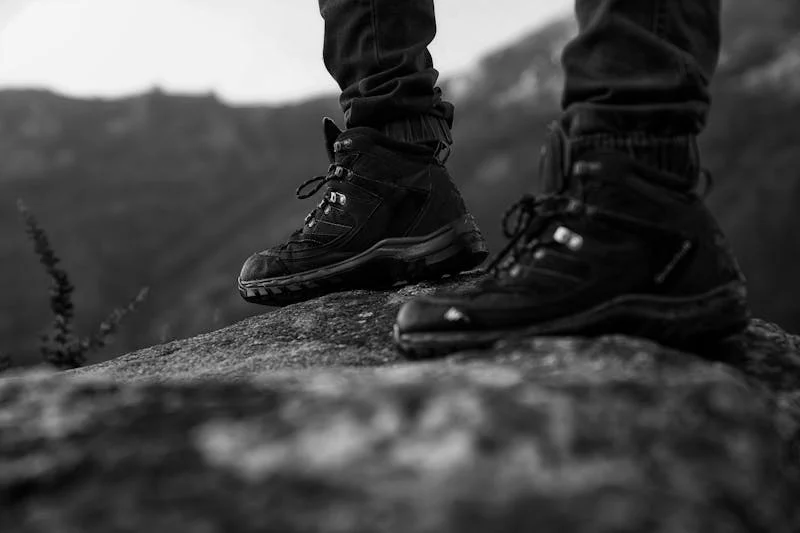
Hiking thrills are further than just footwear; they’re an essential tool for navigating rough terrain, guarding your bases from injury, and enhancing your hiking performance. They offer several benefits, such as
Protection
They shield your bases from jewels, roots, and other sharp objects.
Support
Hiking thrills give ankle support to help sprains.
Continuity
Made from robust accouterments, they repel harsh conditions better than regular shoes.
Choosing the right hiking thrills can be a game-changer, allowing you to explore the great outside more comfortably.
Types of Hiking Boots Chancing the Right Fit for Your Requirements
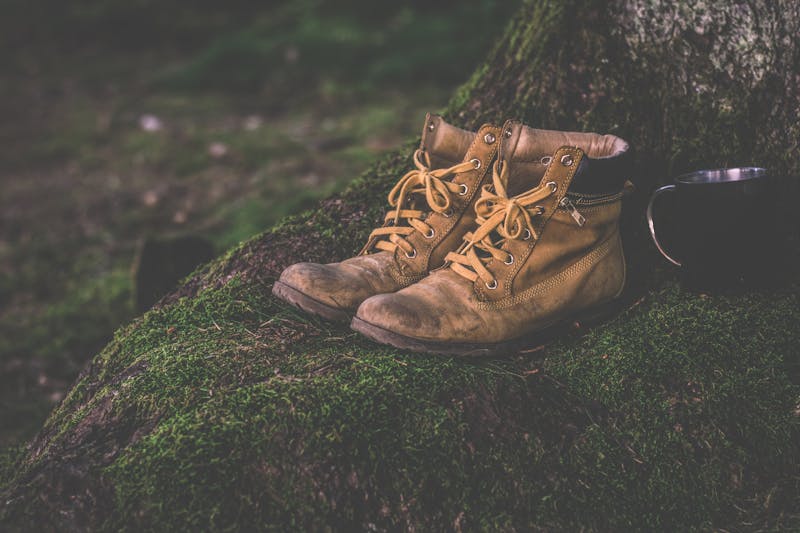
Perfect Hiking Boots Guide”.Not all hiking thrills are created equal, and the type you choose depends on the kind of terrain you will be diving. They are the main orders to consider
Snippersnapper Hiking Boots
Ideal for Day Hikes
Moreover, Featherlight hiking thrills are perfect for short hikes on well-maintained trails. They offer inflexibility and breathability, making them suitable for mild conditions.
Pros and Cons
These thrills are generally made from lighter accouterments, which makes them less durable but more comfortable for short-term wear and tear. While they may not give as important support for long hikes, their featherlight nature reduces fatigue during day passes.
Midweight hiking boots
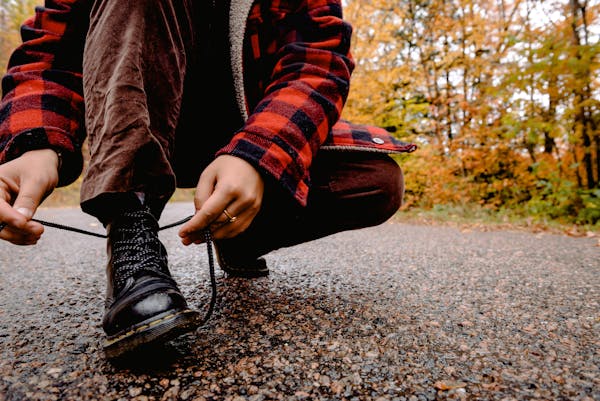
Perfect for Longer Hikes
still, midweight hiking thrills strike the right balance between continuity and comfort, If you’re planning a multi-day hike. They offer further support than featherlight thrills and can handle tougher terrains.
Pros and Cons
While heavier than featherlight options, they give better ankle support and protection. The strike is that they may not be as permeable, leading to sweaty bases on hot days.
Heavyweight Hiking Boots
Designed for Rough Terrain
Therefore, For rugged mountain hikes or encamping with heavy loads, heavyweight hiking thrills are your stylish bet. They’re erected with stiff soles and tough accouterments to handle challenging trails.
Pros and Cons
Although they give maximum support and protection, they’re also the heaviest. This may result in quicker fatigue, but their continuity and performance make them worthwhile for delicate hikes.
Accoutrements Matter Choosing the Right Hiking Boot Material
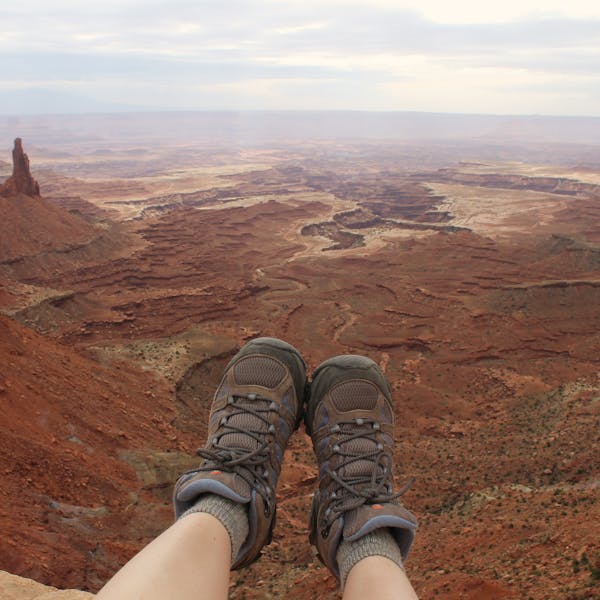
Perfect Hiking Boots Guide”, Therefore, The accouterments used in hiking thrills play a significant part in comfort, continuity, and breathability. Let’s explore the common accouterments used in hiking charge construction.
Leather Hiking Boots
Full- Grain Leather
Offers excellent continuity and water resistance, making it perfect for rough terrains. Still, it’s heavier and requires a longer break-in period.
Nubuck Leather
A softer, more flexible leather that provides continuity without the stiffness of full grain. It offers moderate water resistance and is lighter.
Synthetic Hiking Boots
Nylon and Polyester
Synthetic thrills are lighter and more affordable. They also dry briskly but are less durable than leather.
Gore-Tex Stuffings
Numerous synthetic thrills come with leakproof liners like Gore-Tex, which give a balance between breathability and water resistance.
Crucial Features to Look for in Hiking Boots
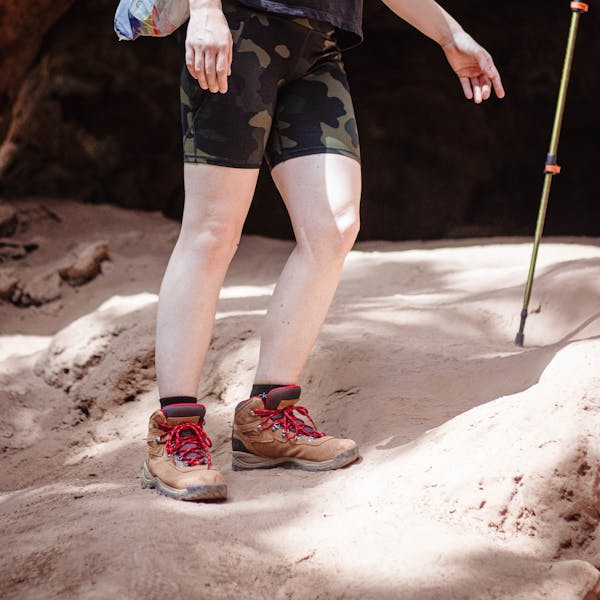
When searching for the perfect hiking thrills, consider these essential features to ensure you make the stylish choice.
Ankle Support
Provides stability on uneven terrain and helps help sprains. Advanced-cut thrills offer further support than low-cut styles.
Waterproofing
Keeps bases dry during wet conditions. Look for leakproof membranes like Gore-Tex if you plan to hike in stormy or wet areas.
Breathability
Allows humidity to escape, keeping bases dry and reducing the threat of pocks.
Outsole Grip
A grippy sole with deep lugs helps maintain traction on different shells.
Chancing the Perfect Fit Tips for Trying On Hiking Boots
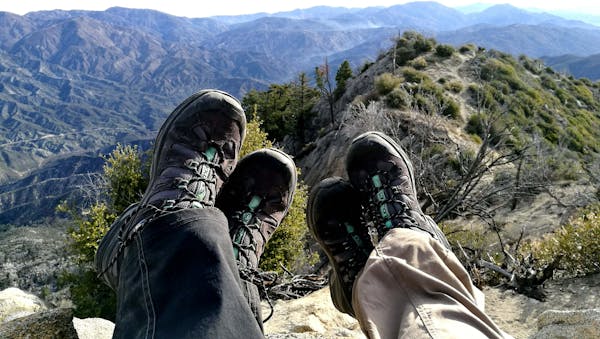
Perfect Hiking Boots Guide”, Getting the right fit is pivotal for comfort and precluding pocks. Then’s how to ensure your hiking thrills fit impeccably.
Try Them On with Hiking Socks
Always wear the socks you plan to hike in when trying on thrills. This ensures a more accurate fit.
Test for Toe Room and Heel Slippage
Make sure there’s enough room to wriggle your toes, but your heel shouldn’t slip when walking. However, you may end up with pocks, If your heel lifts.
Walk on Different shells
Try walking on inclines and declines to see how the thrills perform. Your toes shouldn’t slide forward upward.
Breaking in Your Hiking Boots Why It’s Important
New hiking thrills, especially those made from leather, bear a break-in period. Then’s how to do it right.
Start sluggishly
Wear your thrills around the house for many hours each day before venturing outside.
Gradationally Increase Hiking Distance
Begin with shorter hikes and sluggishly increase the distance. This allows your bases to get used to the thrills without causing discomfort.
Use Thick Socks During the Break-In Period
Wearing thicker socks helps to reduce disunion and buffer your bases.
Maintaining and minding for Your Hiking Boots
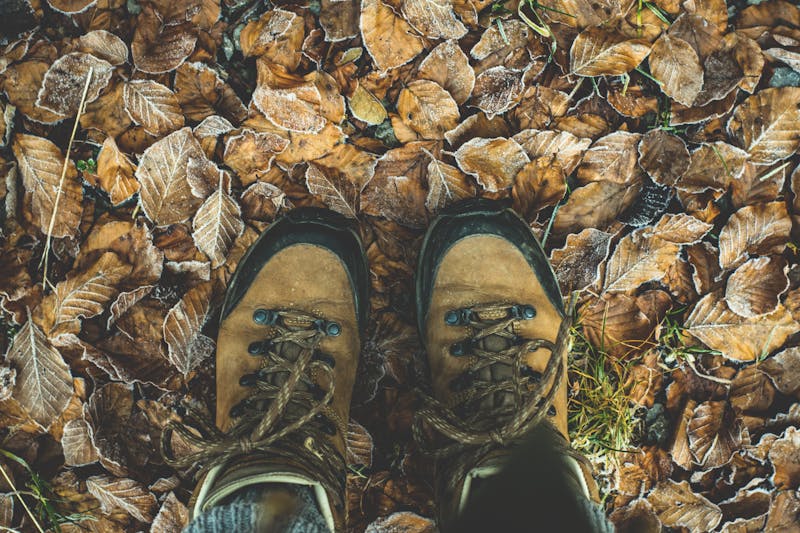
However, Proper conservation will extend the life of your hiking thrills. Follow these tips to keep them in top shape.
Why Hiking Boots Are Essential
Hiking boots are more than just footwear; they’re essential tools for navigating rough terrain. Key benefits include:
- Protection: Shields your feet from rocks, roots, and other sharp objects.
- Support: Provides ankle support to help prevent sprains.
- Durability: Made from robust materials, they withstand harsher conditions better than regular shoes.
Choosing the right hiking boots can be a game-changer, allowing you to explore the great outdoors more comfortably.
Types of Hiking Boots
Not all hiking boots are created equal, and the type you choose depends on the terrain you’ll be exploring. Here are the main categories:
Lightweight Hiking Boots
- Ideal for Day Hikes
- Perfect for short hikes on well-maintained trails.
- Pros: Lightweight and breathable.
- Cons: Less durable; minimal support for long hikes.
Midweight Hiking Boots
- Suitable for Multi-Day Hikes
- Strikes a balance between comfort and durability.
- Pros: More ankle support; versatile for various terrains.
- Cons: Heavier and less breathable on hot days.
Heavyweight Hiking Boots
- Designed for Rugged Terrain
- Best for challenging trails or camping with heavy loads.
- Pros: Maximum support and protection.
- Cons: Heaviest option, leading to potential fatigue.
Materials Matter
The materials used in hiking boots play a significant role in comfort, durability, and breathability. Common materials include:
Leather Hiking Boots
- Full-Grain Leather: Excellent durability and water resistance but heavier and requires a longer break-in period.
- Nubuck Leather: Softer, more flexible, offers moderate water resistance.
Synthetic Hiking Boots
- Nylon and Polyester: Lightweight, quick-drying, but less durable than leather.
- Gore-Tex Linings: Provides breathability and water resistance.
Key Features to Look For
When searching for the perfect hiking boots, consider these essential features:
- Ankle Support: Higher cuts provide more stability on uneven terrain.
- Waterproofing: Look for waterproof membranes like Gore-Tex for wet conditions.
- Breathability: Materials that allow humidity to escape keep feet dry.
- Outsole Grip: Deep lugs help maintain traction on various surfaces.
Finding the Perfect Fit
Getting the right fit is crucial for comfort and preventing blisters. Here’s how to ensure your hiking boots fit properly:
- Try Them On with Hiking Socks: Wear the socks you’ll use while hiking for a more accurate fit.
- Check for Toe Room and Heel Slippage: Ensure enough space for your toes and no heel lift when walking.
- Walk on Different Surfaces: Test the fit on inclines and declines to assess comfort.
Breaking in Your Hiking Boots
New hiking boots, especially those made from leather, require a break-in period:
- Start Slowly: Wear your boots around the house before heading outside.
- Gradually Increase Hiking Distance: Begin with shorter hikes to allow your feet to adjust.
- Use Thick Socks: Thicker socks can help reduce friction during the break-in period.
Maintenance Tips for Hiking Boots
Proper care extends the life of your hiking boots. Follow these maintenance tips:
- Cleaning: Wipe off dirt and debris after each hike with a damp cloth.
- Drying: Air dry at room temperature; avoid direct heat sources.
- Conditioning: Use leather conditioner for leather boots to maintain suppleness.
- Re-Waterproofing: Regularly apply waterproofing treatments.
Common Mistakes to Avoid
To ensure a comfortable hiking experience, steer clear of these common mistakes:
- Ignoring the Break-In Period: Always break in your boots before long hikes.
- Choosing Style Over Functionality: Prioritize comfort and fit over aesthetics.
- Forgetting to Re-Waterproof: Regularly maintain waterproofing.
Hiking Boot Alternatives
While hiking boots are essential for many trails, consider these alternatives for specific situations:
- Hiking Shoes: Great for short hikes on easy terrain, offering more flexibility but less ankle support.
- Trail Runners: Lightweight and suitable for ultra-light hikers, but lack durability.
- Approach Shoes: Designed for rock climbers, offering sticky rubber soles for grip.
Seasonal Considerations
Choosing the right boots for different seasons is crucial:
- Summer Hiking Boots: Lightweight and breathable; low-cut options for well-maintained trails.
- Winter Hiking Boots: Insulated and waterproof; compatible with crampons for icy conditions.
Drawing Your Hiking Boots
After Each Hike
Moreover, Wipe off slush and debris with a damp cloth. For deeper cleaning, use an encounter and mild cleaner.
Drying duly
noway dry your thrills near direct heat sources. Rather, stuff them with review and let them air dry naturally.
Exertion Leather Boots
Leather-Specific Products
Use leather conditioners to keep the material supple and help crack. This is especially important for full-grain leather thrills.
Re-Waterproofing Boots
As a result, Over time, waterproofing can wear off. Apply a waterproofing treatment to keep your thrills resistant to humidity.
Common Hiking charge miscalculations and How to Avoid Them

To ensure an affable hiking experience, steer clear of these common miscalculations
Ignoring the Break-In Period
Avoid wearing new thrills on a long hike. Always break them in first to help pocks.
Choosing Style Over Functionality
It’s tempting to go for the best-looking thrills, but prioritize comfort and fit over aesthetics.
Forgetting toRe-Waterproof
Indeed leakproof thrills need regularre-treatment to maintain their water resistance.
Hiking Boot Alternatives When You Might Consider Other Footwear
While hiking thrills are essential for numerous trails, there are druthers for certain situations. Then’s when you might consider other options.
Hiking Shoes
Great for short hikes on easy terrain, hiking shoes offer further inflexibility than thrills. Still, they give lower ankle support.
Trail Runners
Suitable for ultra-light trampers and trail runners. These are featherlight but warrant the continuity and support of traditional hiking thrills.
Approach Shoes
Ideal for gemstone speeders, approach shoes offer sticky rubber soles for a better grip on rocky shells.
How to Choose the Stylish Hiking Boots for Different Seasons
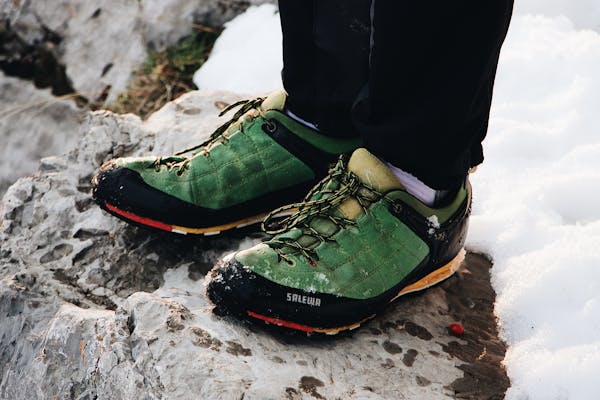
Hiking in different seasons requires thrills that match the conditions. Then’s what to consider for each season.
Summer hiking boots
Snippersnapper and Permeable
Prioritize breathability and humidity-wicking accouterments to keep your bases cool.
Low-Cut Options
Low-cut hiking thrills give acceptable support for well-maintained summer trails.
Winter Hiking Boots
Sequestration and Waterproofing
Winter thrills should be isolated and completely leakproof to keep bases warm and dry.
Compatible with Crampons
For icy conditions, look for thrills that can accommodate crampons for added traction.
Constantly Asked Questions About Hiking Boots
How frequently should I replace my hiking Boots?
It depends on the terrain and frequency of use. Generally, replace them every 500- 800 long hauls or when you notice significant wear and tear.
Can I wear hiking Boots for other conditioning?
Yes, they can be used for conditioning like camping or fishing, but they may not be suitable for running or cycling.
How can I help pocks when wearing hiking Boots?
ensure a proper fit, break in your thrills, and wear humidity-wicking socks.
Frequently Asked Questions
Q: How often should I replace my hiking boots?
A: Generally, replace them every 500-800 miles or when significant wear appears.
Q: Can I wear hiking boots for other activities?
A: Yes, but they may not be suitable for running or cycling.
Q: How can I prevent blisters while wearing hiking boots?
A: Ensure a proper fit, break them in, and wear moisture-wicking socks.
Conclusion
In conclusion, Choosing the right hiking thrills is essential for any out-of-door sucker. With so numerous types, accouterments, and features to consider, choosing the perfect brace might feel inviting. As a result, By understanding your specific requirements and considering factors like charge type, accouterments, and fit, you can make an informed decision. Flashback to maintain your hiking thrills regularly and break them in before hitting the trail to ensure a comfortable and pleasurable adventure.
Invest in a quality brace of hiking thrills, and your bases will thank you on every hike, whether it’s a day trip through the forestland or a grueling mountain journey.
[sp_easyaccordion id=”328″]

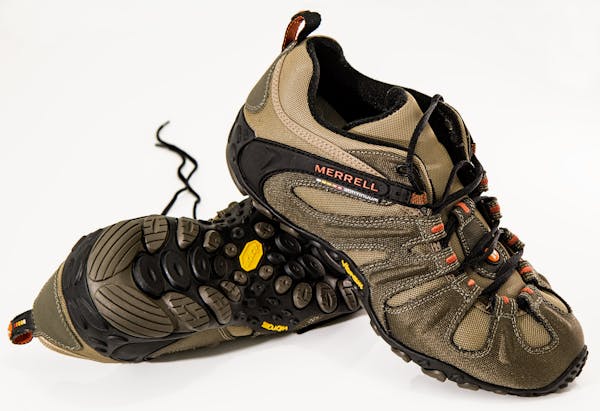
[…] terrains. In this companion, we will cover everything you need to know about the Angry Monkey hiking shoes guide, including their features, benefits, and tips for choosing the perfect […]